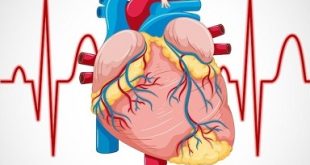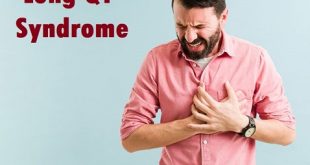What is Bradycardia?
Bradycardia is a medical condition characterized by an abnormally slow heart rate. In individuals with bradycardia, the heart beats at a rate slower than the normal range, typically below 60 beats per minute (bpm) in adults. This condition can be caused by various factors, including age-related changes, certain medications, heart-related problems, electrolyte imbalances, and medical conditions affecting the heart’s electrical system. Bradycardia may not always manifest noticeable symptoms, but when they do occur, they can include dizziness, fatigue, weakness, shortness of breath, and fainting spells. Treatment for bradycardia depends on its severity and underlying cause and may involve medications, pacemaker implantation, or addressing any contributing medical issues.
It is a medical condition where an individual’s heart rate becomes unusually slow, falling below the normal range for their age and physical condition. The heart, which usually beats at a steady rhythm to pump blood throughout the body, may fail to maintain an adequate rate, typically below 60 beats per minute. This condition can be caused by various factors, including heart tissue damage, metabolic imbalances, age-related changes, and certain medications. Bradycardia can lead to reduced blood flow to vital organs, resulting in symptoms such as fatigue, dizziness, confusion, and fainting. It is crucial to identify and treat the underlying cause of bradycardia to ensure proper heart function and overall well-being.
Types of Bradycardias
It can be classified into three types based on its origin and underlying causes.
Sinus Bradycardia
This type originates from the sinus node, which is the heart’s natural pacemaker. In sinus bradycardia, the sinus node generates electrical signals at a slower rate than normal, leading to a heart rate below 60 beats per minute (bpm) in adults. Sinus bradycardia can be a normal response to factors such as sleep, relaxation, or physical fitness, but it can also be caused by certain medications, electrolyte imbalances, and underlying medical conditions.
Sick Sinus Syndrome
Sick sinus syndrome refers to a group of conditions where the sinus node does not function properly. It can cause an irregular heart rate, alternating between bradycardia (slow heart rate) and tachycardia (fast heart rate). This condition is more common in older adults and can be associated with heart disease.
Heart Block
Heart block, also known as atrioventricular block, occurs when there is a disruption in the electrical signals between the upper chambers (atria) and lower chambers (ventricles) of the heart. Depending on the severity of the block, it can cause different degrees of bradycardia. First-degree heart block is mild, while third-degree heart block is more severe and can require a pacemaker for treatment.
Other types of bradycardias include:
- Nocturnal bradycardia: Many healthy people have low heart rates whilst sleeping and, in most cases, this is no cause for concern
- Junctional bradycardia: Usually caused by the absence of the electrical impulse from the sinus node. As a result, the heartbeat is generated by the AV (atrioventricular) junction but is slower than normal
- Reflex bradycardia: This occurs as a response to the baroreceptor reflex, in which the body responds to an abnormal increase in blood pressure by reducing cardiac output (heart rate and volume of blood being pumped out of the heart). It is a normal function of the body, which helps to regulate blood pressure
If you are worried about your heart rhythm or think that you may have bradycardia, then you should speak to your GP as soon as possible and arrange for a referral to a cardiologist.
Prevalence
Prevalence vary across different populations and studies. In the general adult population, the prevalence is estimated to be around 1-2%, but it increases with age. For example, in individuals over the age of 65, the prevalence can be as high as 6-8%. Bradycardia is also commonly encountered in hospitalized patients, particularly in intensive care units and in those undergoing cardiac surgeries. Moreover, athletes may exhibit sinus bradycardia as a result of their well-trained hearts. Additionally, some medications like beta-blockers can cause bradycardia as a side effect, leading to a higher prevalence in patients taking these drugs. It is important to note that many cases of bradycardia are asymptomatic or mild, requiring no intervention. However, when symptomatic or associated with underlying cardiac issues, bradycardia may necessitate treatment with medication, pacemaker implantation, or other interventions to regulate the heart rate and maintain adequate blood circulation.
Bradycardia Pathophysiology
The pathophysiology involves disruptions in the electrical conduction system of the heart, leading to decreased impulse generation or impaired impulse propagation. The sinoatrial (SA) node, often referred to as the heart’s natural pacemaker, generates electrical impulses that initiate each heartbeat. These impulses then spread through the atria, causing them to contract. From there, the impulses pass through the atrioventricular (AV) node, which acts as a gatekeeper, delaying the transmission of impulses to the ventricles. Subsequently, the impulses travel down the bundle of His and its branches, causing the ventricles to contract and pump blood to the rest of the body. In bradycardia, there can be abnormalities in any part of this conduction pathway, resulting in a slow heart rate. Causes of bradycardia include intrinsic factors such as aging, heart diseases (e.g., myocardial infarction), congenital abnormalities, and certain medications, as well as extrinsic factors like increased vagal tone due to certain medical conditions or carotid sinus hypersensitivity.
The consequences of bradycardia depend on the severity and duration of the slow heart rate. In some cases, bradycardia may be asymptomatic or only cause mild symptoms like fatigue and dizziness. However, severe or prolonged bradycardia can lead to reduced cardiac output and inadequate perfusion of organs and tissues. This can result in symptoms such as syncope (fainting), confusion, shortness of breath, chest pain, and even heart failure. Additionally, bradycardia can increase the risk of complications like thromboembolism, as the slow blood flow within the heart can lead to blood clots. Diagnosis of bradycardia is typically based on electrocardiogram (ECG) findings, and treatment options range from addressing underlying causes (e.g., treating heart disease) to implanting pacemakers to regulate the heart rate and ensure proper electrical conduction.
Symptoms of Bradycardia
Symptoms vary from person to person. In fact, some people may experience very mild symptoms or no symptoms at all. The most common symptoms include:
- Dizziness or lightheadedness
- Fainting
- Fatigue
- Chest pain
- Feeling confused or having trouble concentrating
- Breathlessness
- Getting tired easily during physical activity
If you have chest pains, severe shortness of breath, or experience fainting. If you experience any unusual symptoms, you should call you doctor right away.
Causes
There are several reasons you may have an abnormally slow heart rhythm. Causes of bradycardia include:
- Aging
- Heart disease, heart attack or myocarditis (infection of the heart)
- Congenital heart defect
- Heart surgery complication
- Hypothyroidism or chemical imbalance
- Inflammatory diseases like lupus or rheumatic fever
- Sleep apnea
Some medications can cause bradycardia, including:
- Beta-blockers: A class of medications used to control heart rhythm and lower blood pressure, such as Tenormin (atenolol), Cardicor and Emcor (bisoprolol), and Lopresor and Betaloc (metoprolol)
- Calcium channel blockers: A class of medications used to lower blood pressure, such as Verelan and Verelan PM (verapamil) and Cardiazem (diltiazem)
- Lanoxin (digoxin): A medication used to treat abnormal heart rhythms and heart failure
Risk factors
It can be influenced by various risk factors, some of which may include:
- Age: Bradycardia is more common in older adults, as the heart’s natural pacemaker (sinus node) tends to function less efficiently with age.
- Heart Disease: Individuals with heart conditions such as coronary artery disease, myocardial infarction (heart attack), cardiomyopathy, or heart valve disorders have an increased risk of developing bradycardia.
- Medications: Certain medications, such as beta-blockers, calcium channel blockers, and certain anti-arrhythmic drugs, can slow down the heart rate as a side effect, leading to bradycardia.
- Hypothyroidism: An underactive thyroid gland can lower metabolic activity, including affecting the heart rate.
- Electrolyte Imbalances: Abnormal levels of potassium, sodium, or other electrolytes in the blood can disrupt the heart’s electrical system and lead to bradycardia.
- Sleep Apnea: Severe sleep apnea, a condition where breathing repeatedly stops and starts during sleep, can be associated with bradycardia, especially during episodes of oxygen deprivation.
- Autonomic Nervous System Disorders: Conditions that affect the autonomic nervous system, such as neurocardiogenic syncope or vasovagal syncope, can cause bradycardia.
- Hypothermia: Extremely low body temperature can slow down bodily functions, including the heart rate.
- Substance Abuse: The misuse of certain drugs or alcohol can affect the heart’s electrical system and lead to bradycardia.
- Athletes: Well-trained athletes may experience bradycardia due to their heart’s adaptation to regular intense exercise, resulting in a lower resting heart rate.
It’s important to note that some individuals may have bradycardia without any specific risk factors. Additionally, the presence of risk factors doesn’t guarantee that someone will develop bradycardia, but they may increase the likelihood of its occurrence.
Complications
If it is left untreated or unmanaged, can lead to several complications, as the heart’s slow rate can impact its ability to pump blood effectively. Some of the potential complications of bradycardia include:
- Fainting and Dizziness: A slow heart rate may lead to reduced blood flow to the brain, causing dizziness or even fainting spells (syncope). This can be dangerous if it happens during activities such as driving or operating machinery.
- Fatigue and Weakness: Inadequate blood circulation can result in reduced oxygen delivery to the muscles and tissues, leading to persistent fatigue and weakness.
- Chest Pain: Insufficient blood supply to the heart muscles may cause chest discomfort or angina.
- Heart Failure: If bradycardia is severe and prolonged, the heart may struggle to meet the body’s demands, eventually leading to heart failure, where the heart fails to pump blood effectively.
- Cardiac Arrest: In extreme cases, bradycardia can progress to a life-threatening condition called cardiac arrest, where the heart stops beating altogether. Immediate medical intervention, such as CPR and defibrillation, is required to attempt to restore normal heart function.
- Arrhythmias: Bradycardia can increase the risk of developing other abnormal heart rhythms (arrhythmias), including atrial fibrillation or ventricular tachycardia.
- Compromised Blood Pressure Regulation: The body’s ability to regulate blood pressure may be affected by bradycardia, leading to fluctuations in blood pressure.
- Reduced Exercise Tolerance: People with bradycardia may experience limited exercise capacity due to decreased cardiac output.
It’s essential for individuals with bradycardia or those experiencing symptoms like dizziness, fainting, chest pain, or persistent fatigue to seek medical attention promptly.
How to diagnosis bradycardia?
To diagnose bradycardia, doctors ask questions about your medical history and do a physical exam. Then doctors use advanced diagnostic procedures and technology to effectively diagnose, inform treatment and carefully monitor the condition. Common diagnostic procedures can include:
Blood test: Blood tests check the levels of certain fats, cholesterol, sugar and protein in the blood that could indicate bradycardia and other heart conditions.
Electrocardiogram (EKG): This test measures the electrical activity of the heart and can help determine if parts of the heart are enlarged, overworked or damaged. The heart’s electrical currents are detected by 12 to 15 electrodes that are attached to the arms, legs and chest via sticky tape.
Event monitor: This portable EKG device records the heart rate when a button is pressed. It can be worn for weeks or until symptoms occur.
Holter monitor: This portable EKG device continuously records the heart’s rhythms and is worn for 24 to 48 hours during normal activity.
LINQ insertable cardiac monitor: This wireless, powerful, small insertable cardiac monitor is ideal for patients experiencing infrequent symptoms that require long-term monitoring or ongoing management.
Treatment for Bradycardia
The treatment for bradycardia depends on the severity of symptoms and the underlying cause of the slow heart rate. Here are some common treatment options:
Observation
In mild cases of bradycardia without significant symptoms, especially in athletes, the doctor may choose to monitor the condition without immediate intervention.
Addressing Underlying Causes
If bradycardia is a result of an underlying medical condition, such as hypothyroidism, electrolyte imbalances, or medication side effects, treating the primary cause can often resolve the slow heart rate.
Medications
In some cases, medications may be prescribed to increase the heart rate or improve the heart’s electrical conduction. These may include atropine, which is commonly used in emergency situations, or other medications like epinephrine or dopamine.
External Pacing
Temporary external pacing can be applied in emergency situations to increase the heart rate. This is achieved by applying electrodes to the chest that deliver electrical impulses to stimulate the heart.
Transcutaneous Pacing
Similar to external pacing, transcutaneous pacing is a temporary measure that involves placing pacing pads on the chest or back, which are connected to an external pacing device. Electrical impulses are then delivered through the skin to stimulate the heart.
Pacemaker Implantation
For persistent or symptomatic bradycardia, a long-term solution is the implantation of a pacemaker. A pacemaker is a small device placed under the skin, usually in the chest, that continuously monitors the heart rate and delivers electrical impulses to regulate the heart rhythm as needed.
The choice of treatment depends on the individual patient’s condition, the underlying cause of bradycardia, and the presence and severity of symptoms. It is crucial for patients with bradycardia to be under the care of a qualified healthcare professional to determine the most appropriate treatment plan for their specific situation.
Prevention of Bradycardia
It can be caused by certain medications, particularly if they are taken at high doses, so it’s important to take all medications as directed. Although bradycardia is not typically preventable, health care providers recommend strategies to reduce the risk of developing heart disease. Take the following heart-healthy steps:
- Get regular exercise. Your health care provider may give you recommendations about how much and what type of exercise is best for you.
- Eat a healthy diet. Choose a healthy, low-fat, low-salt, low-sugar diet that’s rich in fruits, vegetables and whole grains.
- Maintain a healthy weight. Being overweight increases the risk of developing heart disease.
- Keep blood pressure and cholesterol under control. Make lifestyle changes and take medications as prescribed to manage high blood pressure, diabetes and high cholesterol.
- Don’t smoke. If you need help quitting, talk to your health care provider about strategies or programs to help.
- If you drink, do so in moderation. If you choose to drink alcohol, do so in moderation. For healthy adults, that means up to one drink a day for women and up to two drinks a day for men. If you can’t control your alcohol use, talk to a health care provider about a program to quit drinking and manage other behaviors related to alcohol abuse.
- Manage stress. Intense emotions may affect heart rate. Some ways to relieve stress are getting regular exercise, joining a support group and trying relaxation techniques, such as yoga.
- Go to scheduled checkups. Have regular physical exams and report signs or symptoms to your health care provider.
 Diseases Treatments Dictionary This is complete solution to read all diseases treatments Which covers Prevention, Causes, Symptoms, Medical Terms, Drugs, Prescription, Natural Remedies with cures and Treatments. Most of the common diseases were listed in names, split with categories.
Diseases Treatments Dictionary This is complete solution to read all diseases treatments Which covers Prevention, Causes, Symptoms, Medical Terms, Drugs, Prescription, Natural Remedies with cures and Treatments. Most of the common diseases were listed in names, split with categories.







